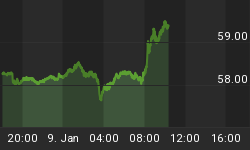I'm a big fan of classic stock market literature. I think it's fascinating to read how the old-timers operated in the market and what they thought of the market situation of their day. I recently finished one such insightful volume entitled "A Century of Prices" (by Theodore Burton and G.C. Selden, first published in 1919 and available from Fraser Publishing Co, Burlington, VT). I came away from this incisive work with some idea that can be applied to our current stock market/commodities/economic situation, which I'd like to share.

There are several lessons to be learned from this little book. One is the relationship of interest rates to the stock market and how the one can be used to discover major turning points in the other. But the main lesson to be learned from this work, which covers U.S. price history all the way back to the late 1700s, is the influence of major wars on the stock and commodity markets.
What specifically is this lesson? The lesson is that major wars (defined as any military conflict lasting at least 3-4 years or longer) almost without exception bring about rises in the general price levels of stocks and commodities -- and by extension the general economy -- lasting from 5-7 years. Minor wars (skirmishes lasting only 1-2 years or less) do not typically have much lasting impact on price levels or the economy.
Moreover, the level of financial commitment in the first year or so of the war will usually determine in advance whether the conflict will be of a long-term (i.e., major) or a temporary (i.e., minor) nature. This level of commitment can be seen in the relative levels of government spending in the first 12 months of the war, including the months immediately preceding the declaration of war. This principle has obviously application to our current situation as the war on Iraq wages on past the one-year anniversary. More importantly, the price tag for 2003 of the war has been announced at $87 billion, and the Fed as injected $1 trillion in liquidity in the banking system in the past year. This strongly suggests that the war will likely be long-term as opposed to a merely temporary one.
What then can be expected of stock and commodity prices in the 1-2 years ahead? Based on the history uncovered in "A Century of Prices" they can be expected to continue rising overall. This means the U.S. economy will likely be "sustained" over the next few years despite the loudest grumblings of the bears to the contrary. Let's take a closer look at the market internals, as well as past history, to try and gain a better perspective on this.
The first things to usually bottom among commodities ahead of a major war effort are steel and copper prices. For obvious reasons, steel, copper and other base metals are in tremendous demand during wars and rising prices for these commodities are normal in time of war. In turn, strength for steel and copper prices precedes general economic strength. For instance, after the depths of the Great Depression in 1933, steel and copper prices rallied into the end of the decade along with most other commodities. This was obviously a precursor to World War II, as well as a reaction to the enormous re-liquification of the markets in an attempt to rescue the economy from the Depression. Are we witnessing a repeat of the 1930s today (replete with re-liquification and war-related spending)? You bet!
A recent edition of the London Financial Times discussed the revival of the worldwide iron and steel industry, including right here in the U.S. That's right, the long-defunct U.S. steel industry is making a comeback! International Steel Group (ISG) has been leading this "Rebirth of American Steel" by picking up nearly 40 bankrupt steel companies in the past five years. According to a recent special report by metal consultancy group World Steel Dynamics, ISG has taken an "uncompetitive array of steel plants" in bankruptcy and transformed them into "one of the world's best-positioned steelmakers." This after many pundits had long since pronounced the U.S. steel industry "dead." According to the message of "A Century of Prices," no major economic revival can begin without a revival in steel and other industrial metals. Neither can a major war be fought without it. Lo and behold, we are witnessing this revival in the metals, which bodes well for the U.S. economy in the years immediately ahead.
"A Century of Prices" also shows us that the middle part of a decade where a major war is fought is bullish without exception. We also know that the "fifth" year of every decade is always bullish, too. So might we expect a continuation of the stock/commodities bull market in 2005? Those market forecasters calling for a market crash and economic recession in 2005 had better re-think their positions based on the assumption that history repeats.
"A Century of Prices" shows us that we can definitely take a page right out of the past and learn from generations gone by. History really does repeat, and this basic lesson comes alive in the pages of this book.















